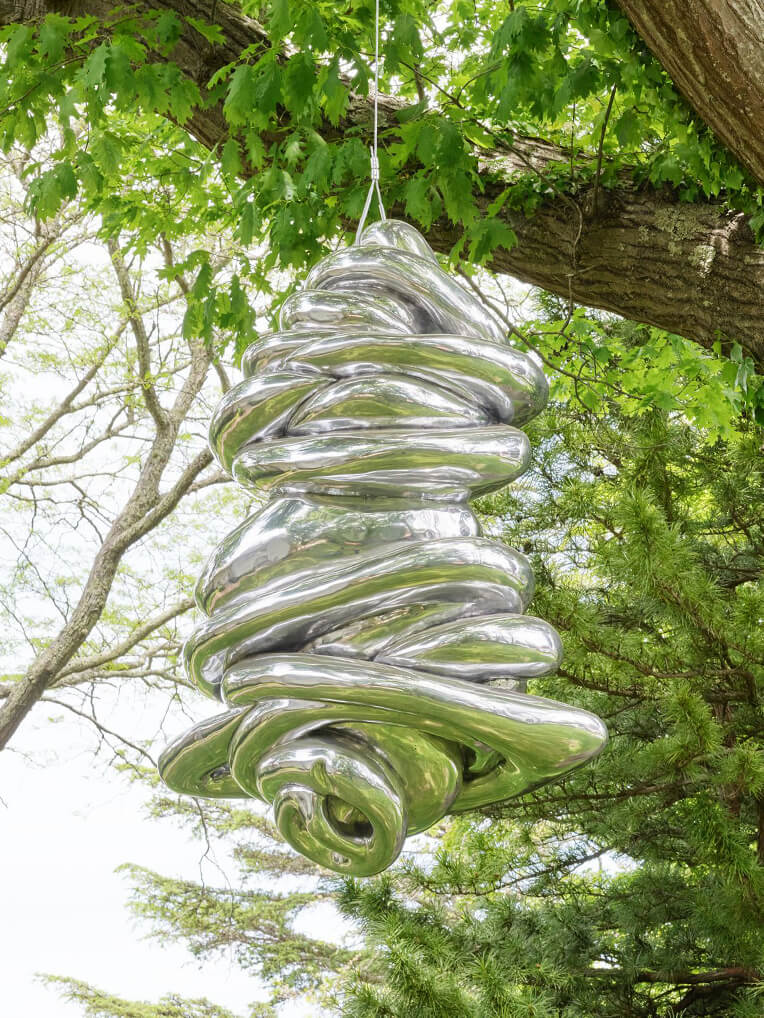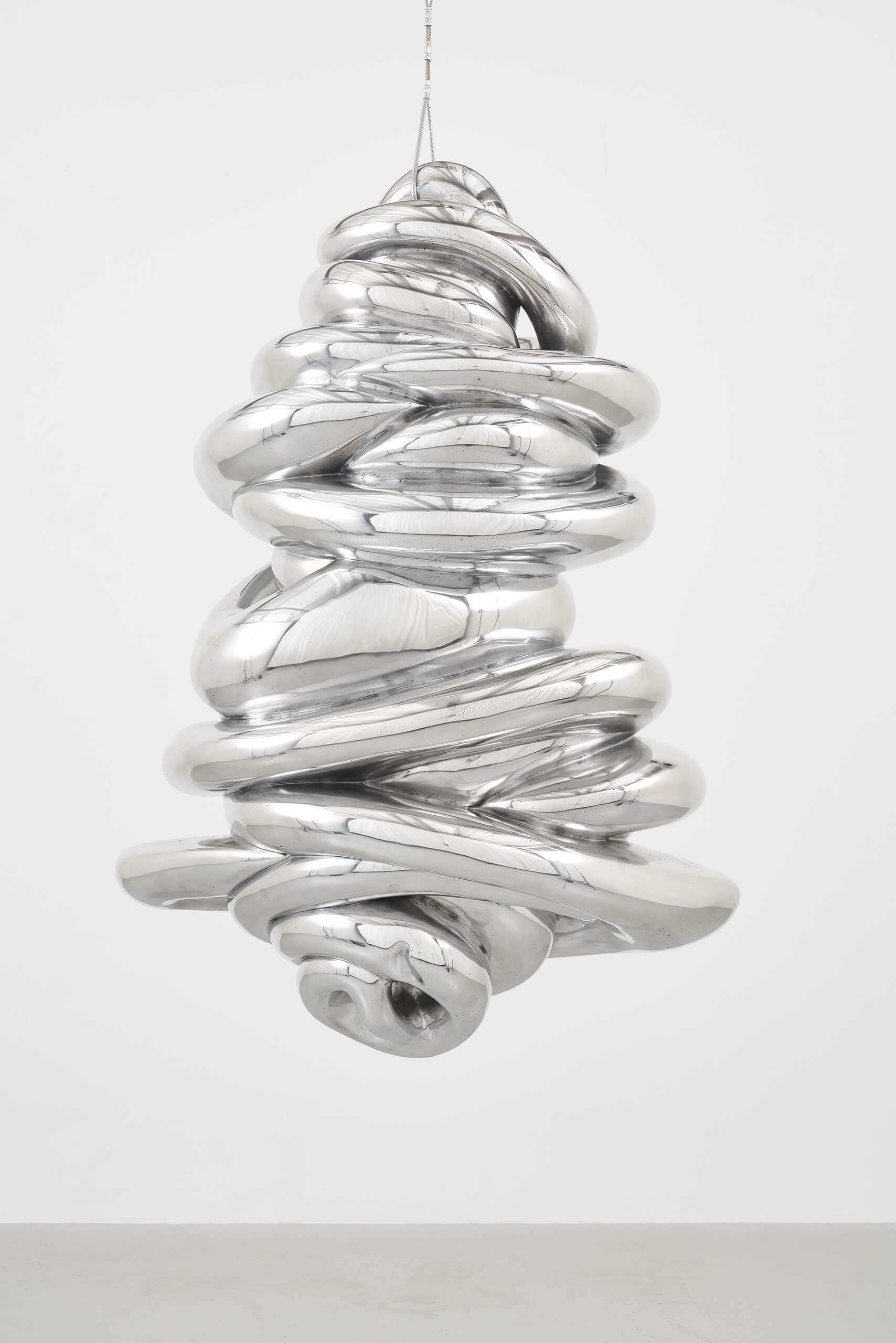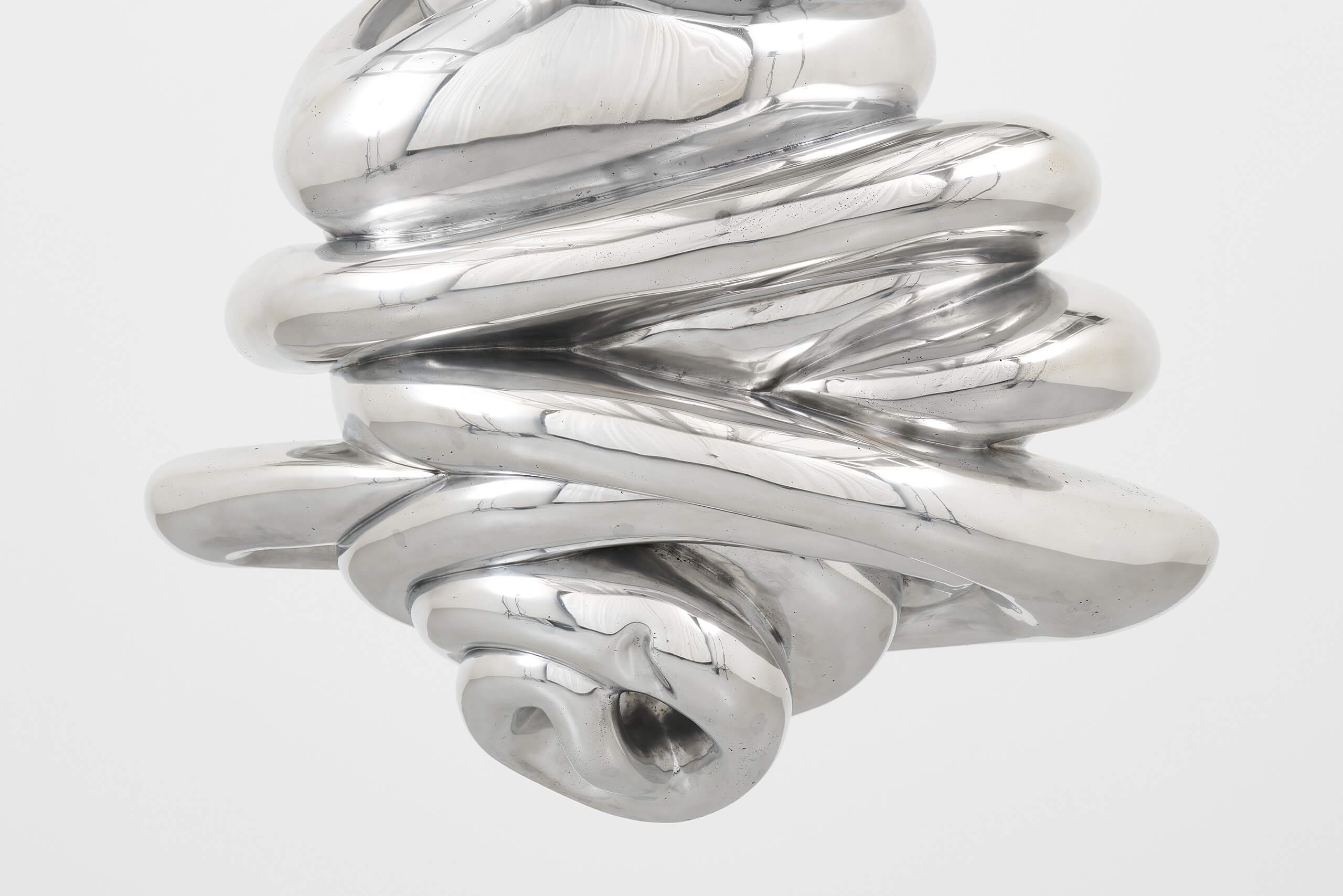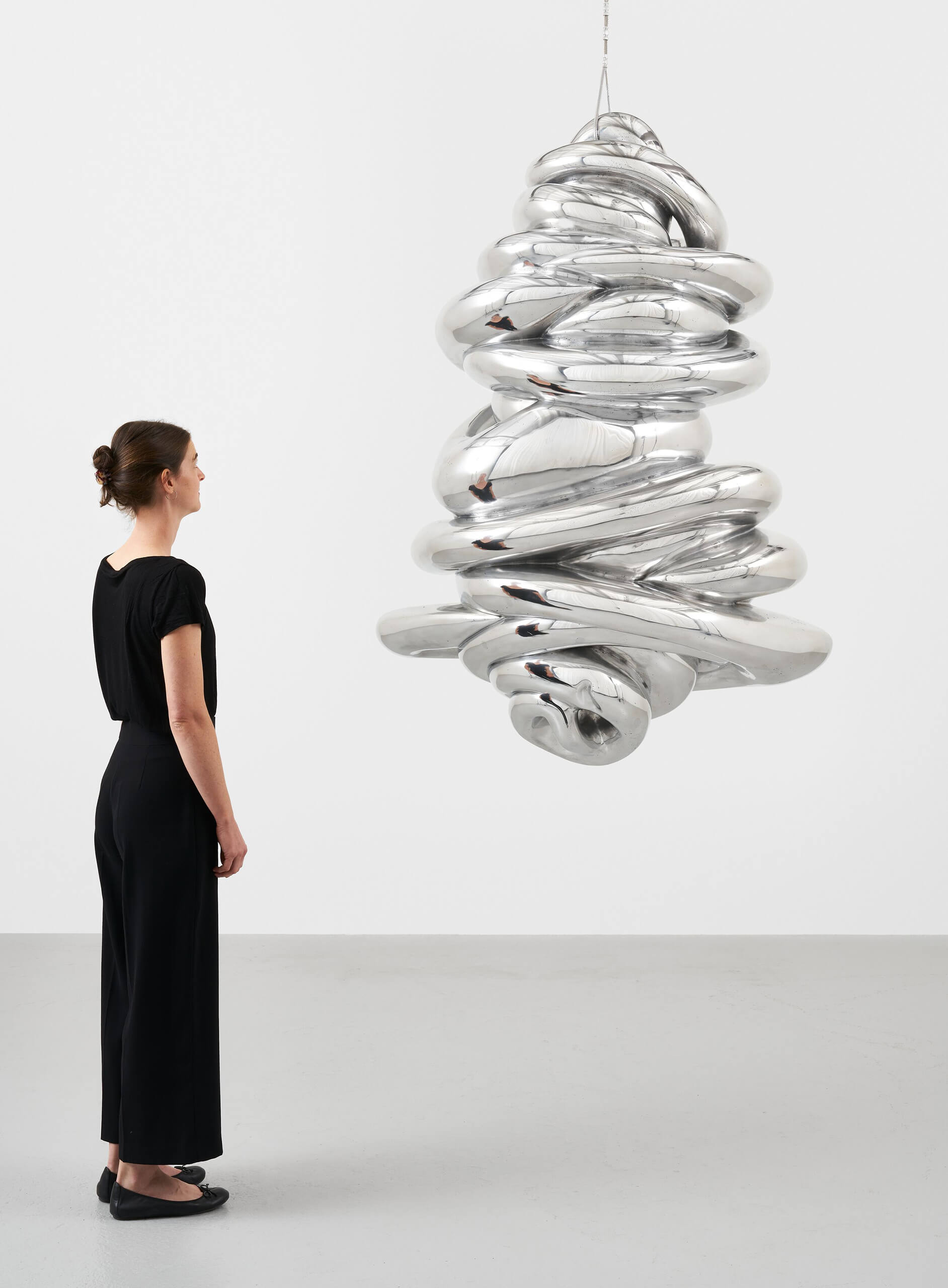
Louise Bourgeois
Untitled
Untitled
2004 Aluminium 160 x 116 x 70 cm / 63 x 45 ⅝ x 27 ½ in
Born in 1911, Louise Bourgeois produced a rich and multifaceted oeuvre over her seven-decade career. Using the body as a primary form, she explored the full range of human experience in a variety of mediums, from intimate drawings to large-scale installations. Sculpture was always at the forefront of Bourgeois’s practice. As she explained: ‘The two dimensions do not satisfy me. I have to have the reality given by the third dimension.’ [1]
‘The spiral is the beginning of movement in space. As opposed to the rigidity of the monolith, the subject is exploring space.’—Louise Bourgeois [2]
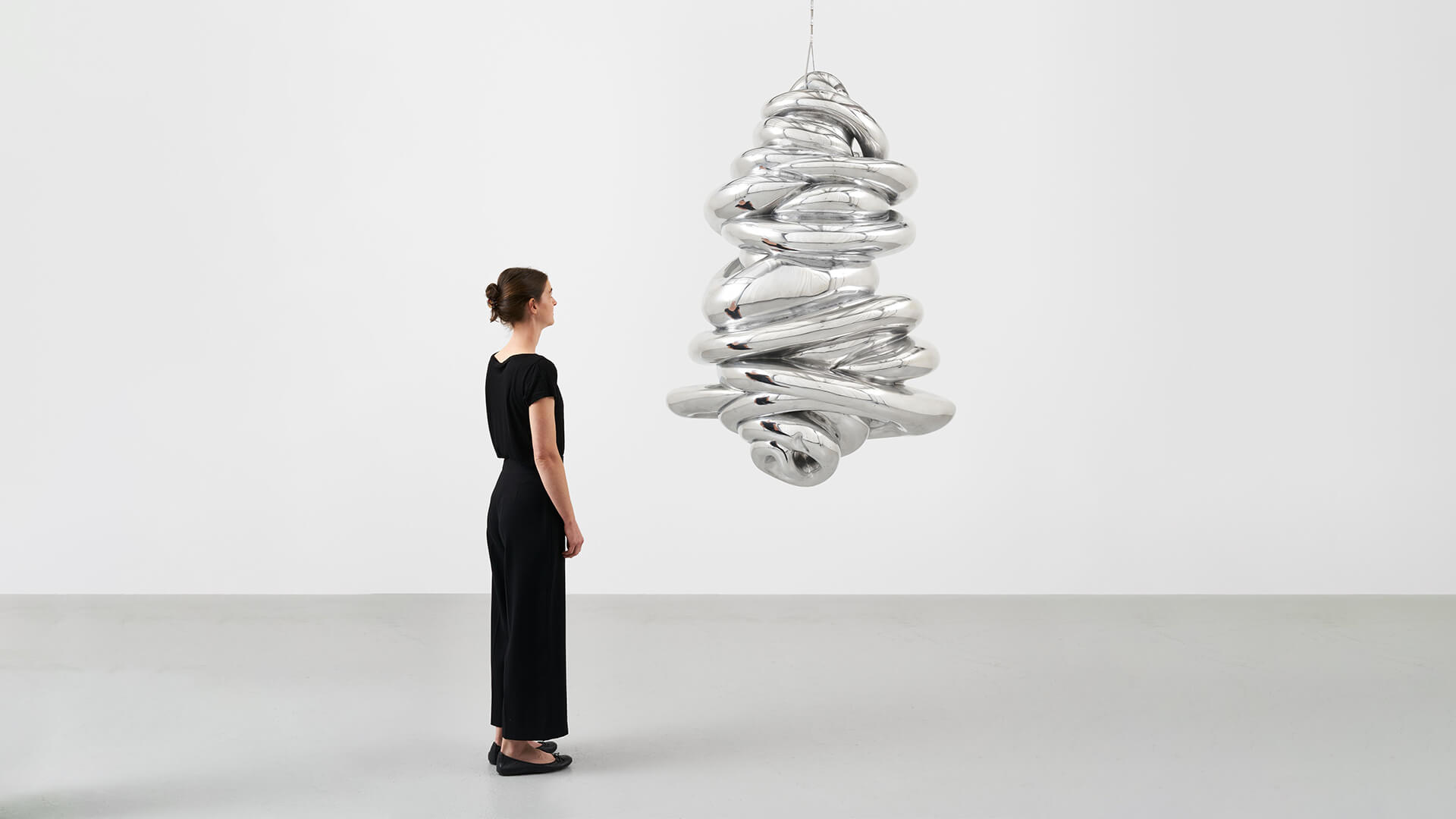
Delicately suspended, this large-scale sculpture exudes the sophistication and tenderness that is typical of Bourgeois’s work. ‘Untitled’ gently rotates and revolves to create a continuously morphing display that reflects its environment and evokes the natural world. Its form recalls a curvaceous beehive—beautiful, complex, and possibly threatening—as well as an abstract anatomical heart.
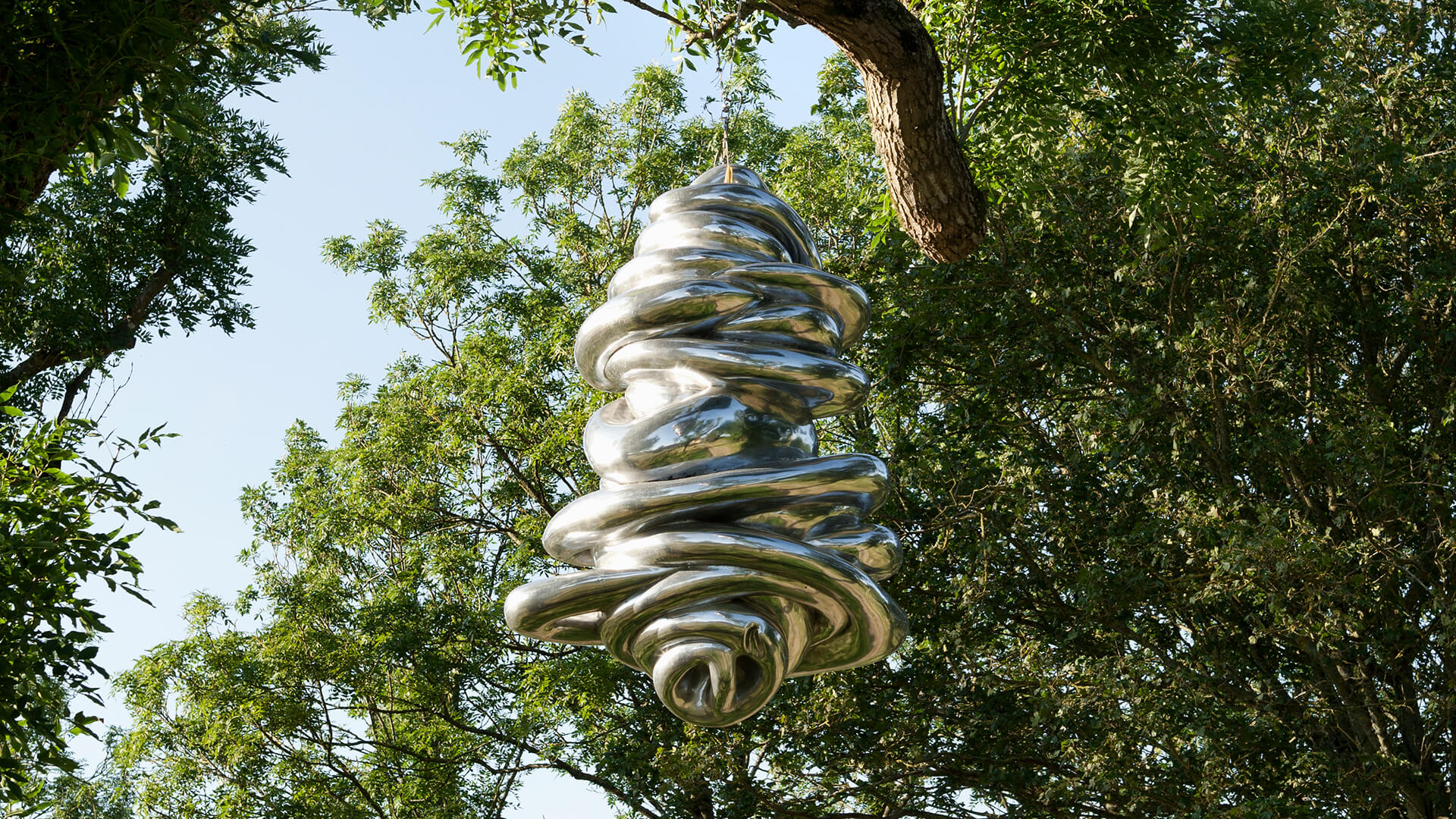
Since the early 1960s, Bourgeois embraced the possibilities of suspending her work, going against the tradition of grounding or elevating sculpture on a plinth or pedestal. For Bourgeois: ‘Horizontality is a desire to give up, to sleep. Verticality is an attempt to escape. Hanging and floating are states of ambivalence’. [3] This approach recurs throughout the artist’s practice, from her ‘Lair’ works of the early 1960s to her cloth figures of the 2000s.
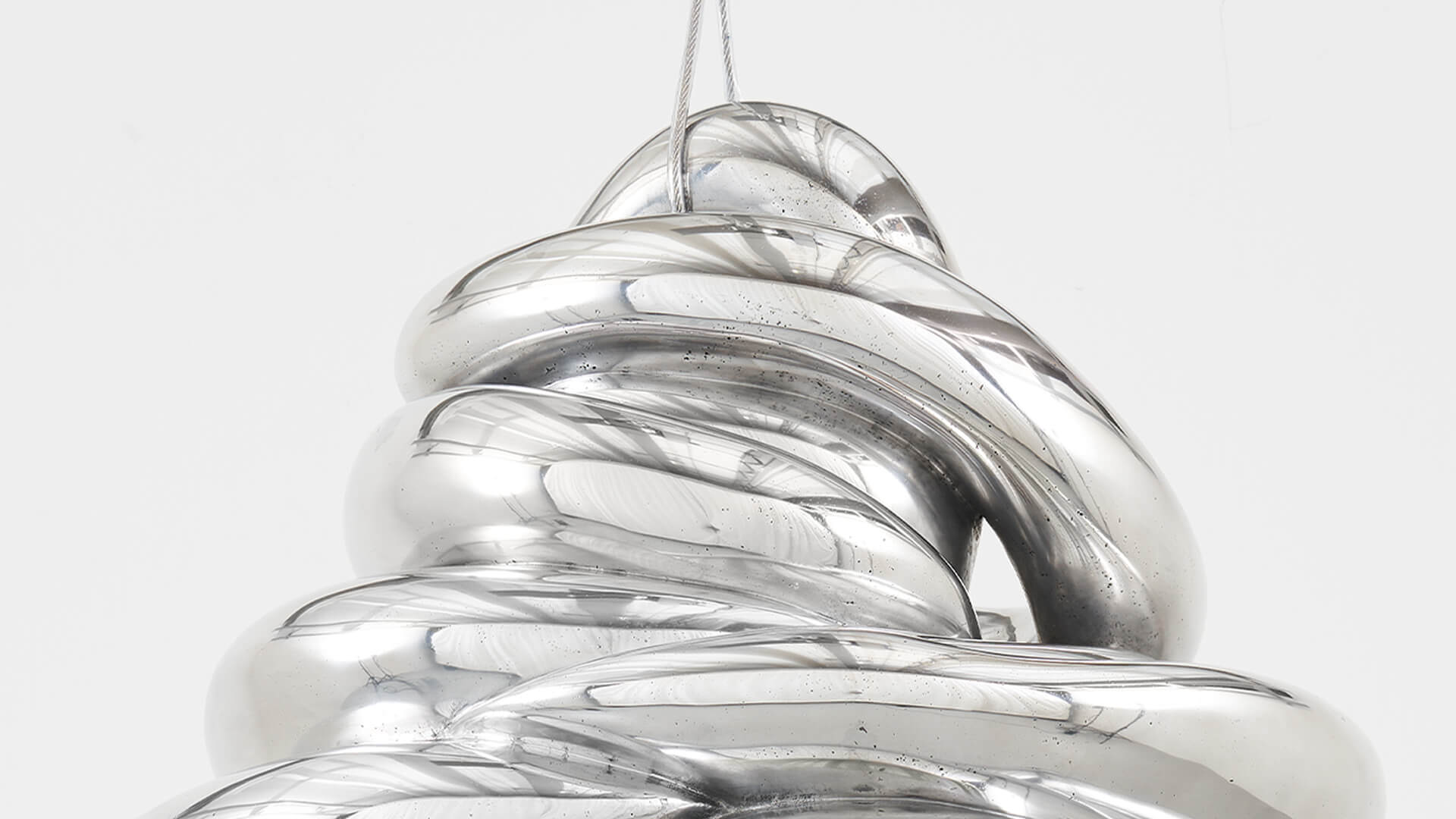
‘Untitled’ is exemplary of Bourgeois’s meticulous investigation of geometric forms. She experimented with the spiral motif in her first sculptures, the ‘Personages,’ which were begun in the late 1940s. As the series progressed, Bourgeois began stacking elements on a central axis, allowing them to twist and turn in various configurations. The spiral motif appears again in her torqued plaster mounds and ‘Lairs’ from the 1960s, her bronze and marble ‘Nature Study’ works of the 1980s, and in numerous drawings and prints throughout her career. For Bourgeois, the spiral was symbolic of an endless natural cycle and state of metamorphosis, but also recalled her memories of washing tapestries during their dying and restoration process, a crucial experience of her childhood.
‘The Spiral is important to me. It is a twist. As a child, after washing the tapestries in the river, I would turn and twist and wring them with three others or more to ring the water out. Later I would dream of getting rid of my father’s mistress. I would do it in my dreams by ringing her neck. The spiral—I love the spiral—represents control and freedom.’—Louise Bourgeois [4]
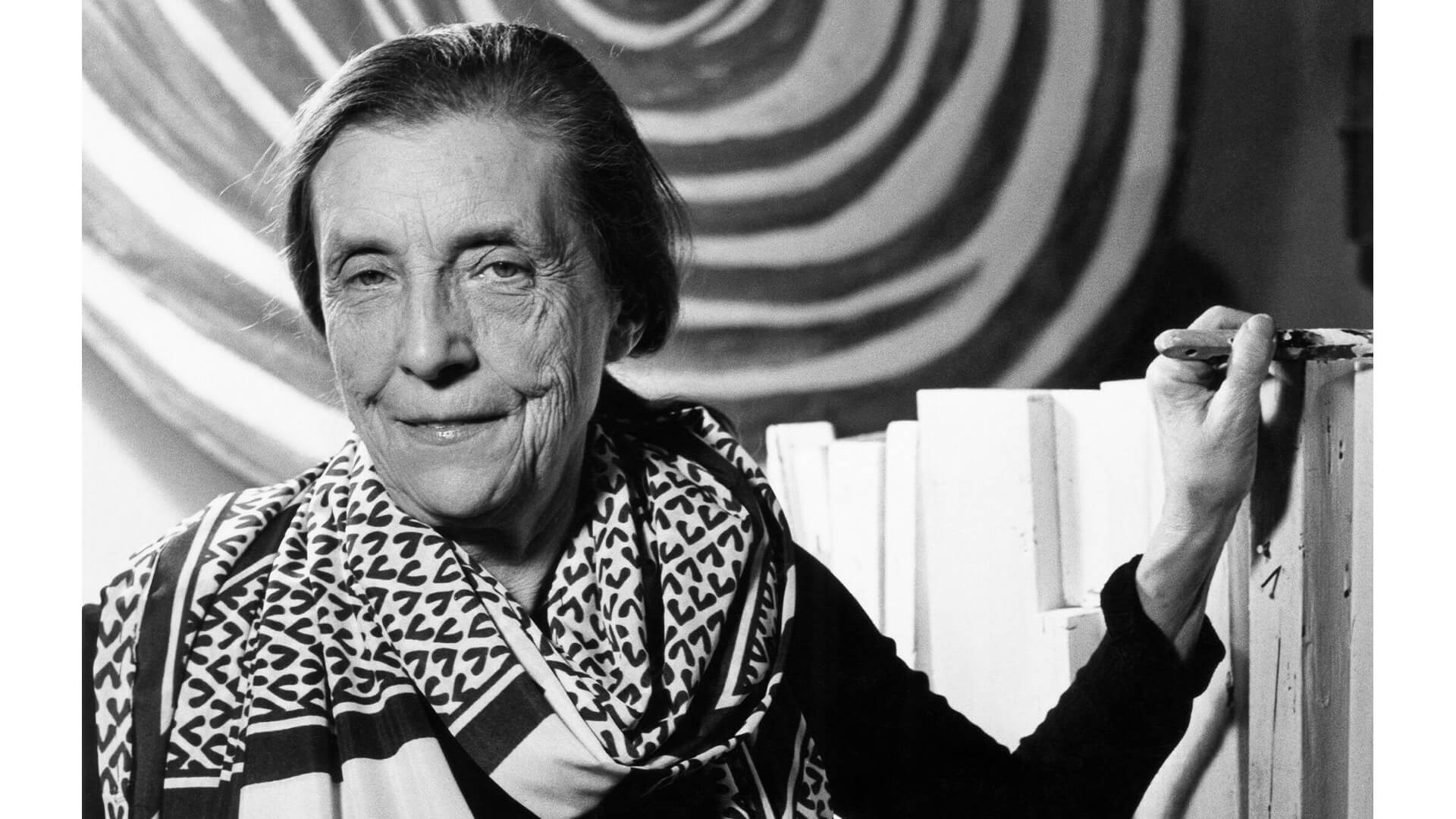
The spiral also relates to emotional states of anxiety (tightening) and relief (unwinding), prompting Bourgeois to question: ‘Where do you place yourself, at the periphery or at the vortex? Beginning at the outside is the fear of losing control…. Beginning at the centre is affirmation, the move outward is a representation of giving, and giving up control; of trust, positive energy, of life itself.’ [5] Turning in physical space, the suspended sculpture further emphasizes these opposing forces and engages with its architectural surroundings: ‘Spirals—which way to turn—represent the fragility in an open space.’ [6]
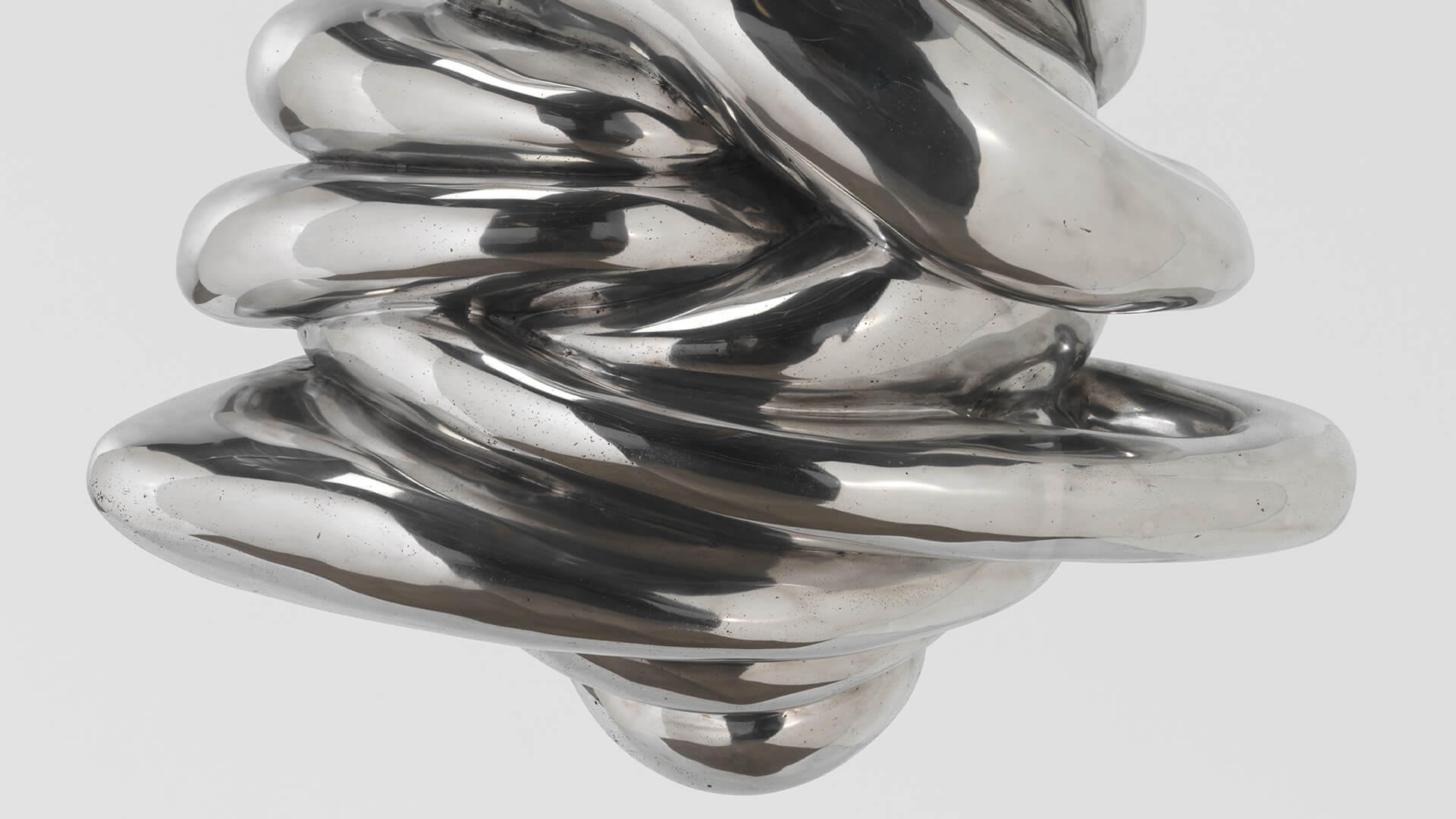
Created late in her career, this masterpiece reflects the thematic concerns and intense emotions that defined Bourgeois’s illustrious practice while highlighting her ceaseless innovation and historic contribution to contemporary art. ‘Untitled’ brilliantly demonstrates Bourgeois’s ability to craft a poignant and profound narrative through abstraction and personal symbolism.
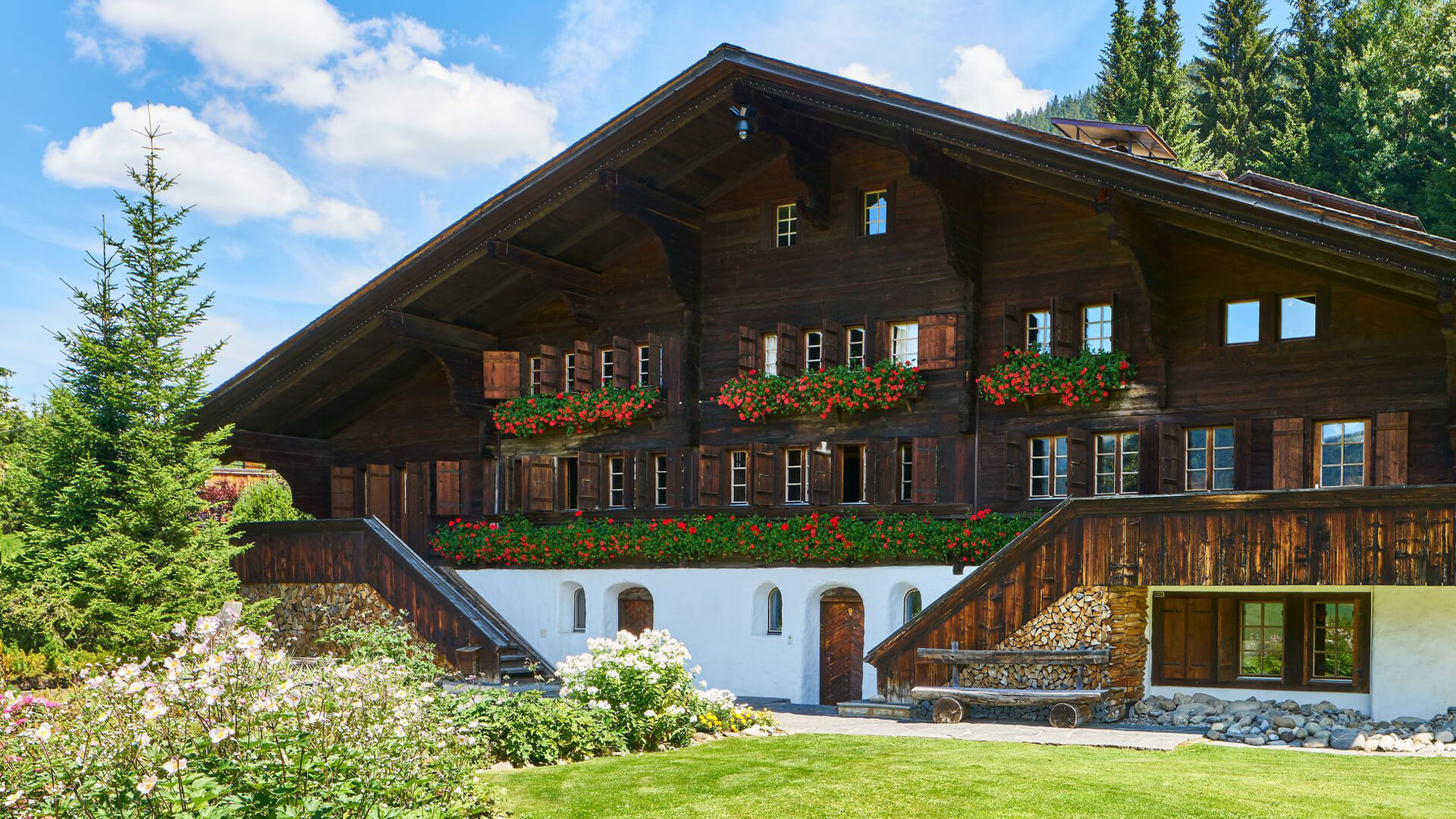
On view in Gstaad
‘Untitled’ by Louise Bourgeois is on view by appointment at Vieux Chalet in Gstaad. Please visit our location page or contact our team to learn more.
Artwork images © The Easton Foundation/VAGA at ARS, NY. Photo: Jon Etter Louise Bourgeois in 1978. Photo: Carollee Pelos. Art © The Easton Foundation/VAGA at ARS, NY
[1] Bourgeois from an edited transcript of the documentary film ‘No Trespassing,’ directed by Nigel Finch, edited by Anthony Wall, and produced by Arena Films, London, 1994, © BBC. Quoted in Marie-Laure Bernadac and Hans Ulrich Obrist, eds., ‘Louise Bourgeois, Destruction of the Father/Reconstruction of the Father: Writings and Interviews 1923–1997,’ London: Violette Editions, 1998, p. 255. [2] Bourgeois quoted in Alain Kirili, ‘The Passion for Sculpture: A Conversation with Louise Bourgeois,’ Arts, vol. 63, no.7, March 1989, pp. 68–75. Quoted in Marie-Laure Bernadac and Hans Ulrich Obrist, eds., ‘Louise Bourgeois, Destruction of the Father/Reconstruction of the Father: Writings and Interviews 1923–1997,’ London: Violette Editions, 1998, p. 182. [3] Bourgeois quoted in John Cheim and Jerry Gorovoy, eds., ‘Louise Bourgeois Drawings,’ New York: Robert Miller Gallery; Paris: Daniel Lelong, 1988, p. 109. [4] Bourgeois quoted in Paul Gardner, ‘Louise Bourgeois,’ New York: Universe Publishing, 1994, p. 68. [5] Bourgeois quoted in ‘Self-Expression Is Sacred and Fatal: Statements’ in Christiane Meyer-Thoss, ‘Louise Bourgeois: Designing for Free Fall,’ Zurich: Ammann Verlag, 1992, p. 179. [6] Ibid., p. 179.
